Wheatley Viaduct
Wheatley Viaduct
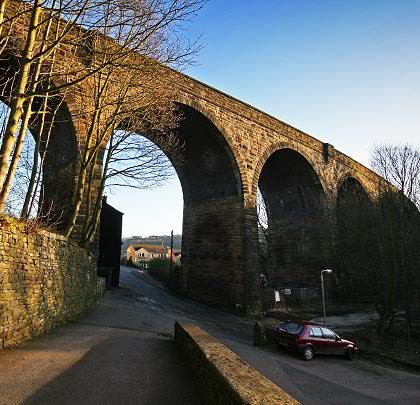
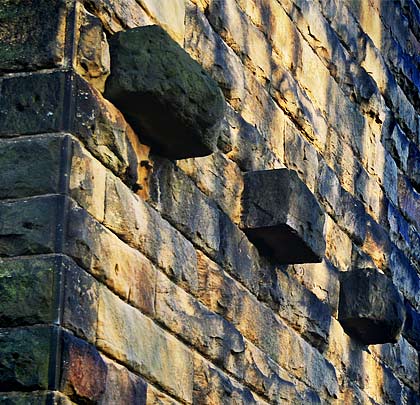
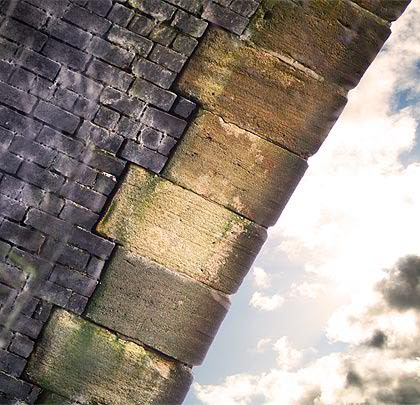
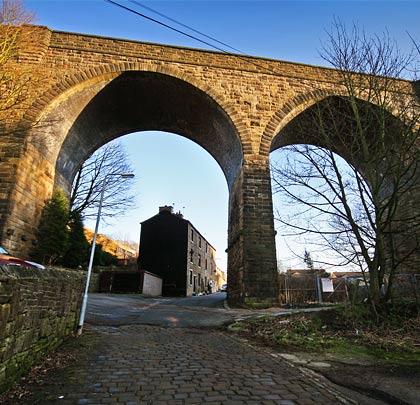
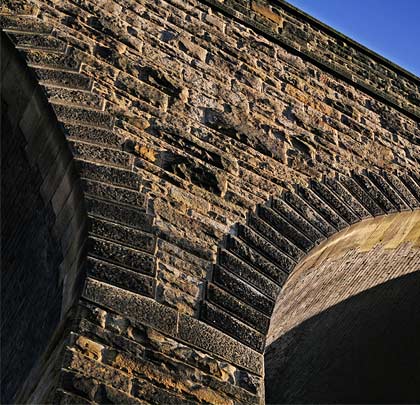
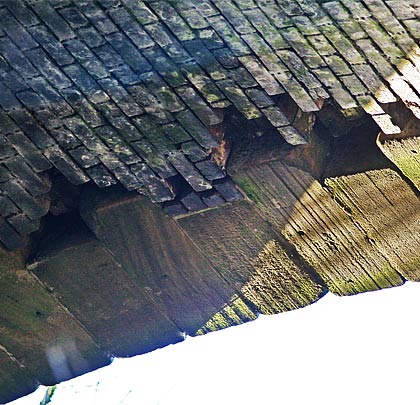
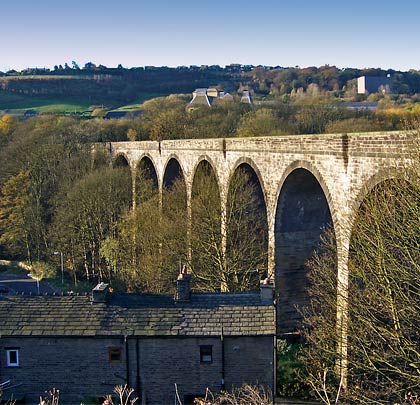







Conceived as part of a grander scheme in 1883, the Halifax High Level and North & South Junction Railway – abbreviated in 1892 to the Halifax High Level Railway – extended for a little over three miles, leaving the Halifax-Queensbury line at Holmfield and terminating at St Pauls Station. Construction got underway late in 1887, requiring a workforce of between 1,100-1,200 men employed by the contractor, Messrs Baker of Bradford.
Two substantial structures were required towards the northern end – a viaduct of ten arches and an 819-yard tunnel, both at Wheatley. The former was approaching completion by August 1889 when the half-yearly shareholders meeting was told that its arches had been turned and its masonry was built except for the parapets.
Wheatley Viaduct is an imposing addition to the landscape, reaching a height of 100 feet to look out over adjacent housing. It extends for almost 200 yards, curving to the east throughout on a radius of about 23 chains.
Whilst the arches are brick, the remainder of a structure is stone. Included are carefully masoned voussoirs but, behind these, several sections of brickwork have been lost resulting in some spans being fenced off beneath. Refuges are built out above every other pier, with the two sides’ refuges being offset by one pier. The stone support blocks for the arch centring are still in situ on each pier face.
The inaugural passenger service over the Halifax High Level ran on Thursday 4th September 1890 although goods had been carried as far as Pellon – the only intermediate station – since 1st August. Running northbound, the train stopped at the tunnel’s western entrance to allow Mrs Booth, the Mayoress, to unlock the gates with a silver key. There was much rejoicing. This was, however, short-lived as the passenger service linking the higher and lower parts of Halifax lasted only 26 years, ending on 1st January 1917. Goods trains continued to shuttle back and forth until 25th June 1960.







